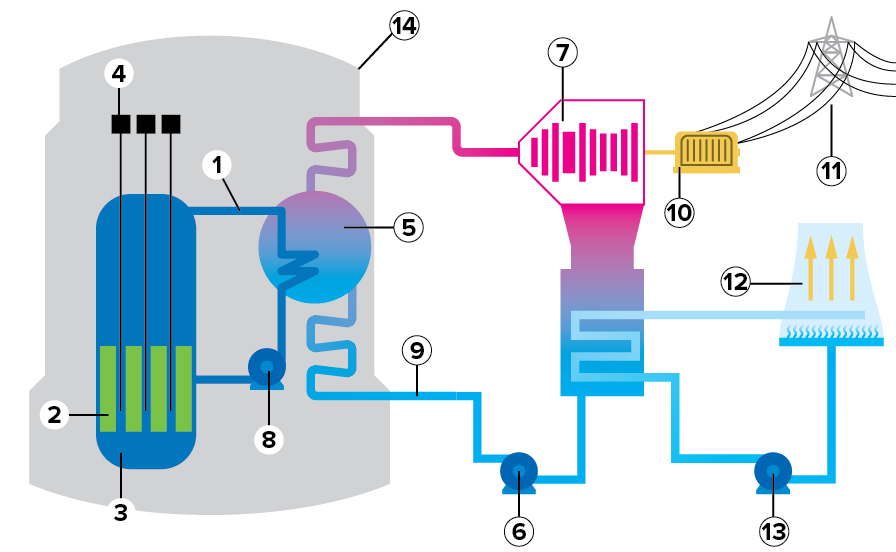
How a VVER-type NPP Works
back to contentsA nuclear power plant with a VVER reactor has two separate co-existing water circuits. The primary circuit (1) contains water heated by nuclear fuel rods (2) to up to 239,7 °С in the reactor pressure vessel (3). Chain reaction stability is ensured by the reactor control and protection system (4). All the primary circuit equipment is placed inside the containment building (14).
Water remains in its liquid state in the primary circuit due to high pressure (17,6 MPa),. Once heated in the reactor, the water passes onward to the steam generator (5) – huge cylinders with tubes located inside them. VVER-type steam generators (SGs) are placed horizontally, four per reactor island, ensuring an even higher degree of safety. Primary circuit water is transferred to high pressure tubes, while secondary circuit (9) water is pumped by feed water pump (6) into to the steam generator. Secondary circuit pressure is twice as low as the primary circuit pressure – which is why secondary circuit water vaporizes, absorbing heat from primary vessel tubes inside the SGs. The generated steam is transferred into the turbine (7) that it rotates. The primary circuit water leaves SG tubes and is then pumped into the reactor through a primary reactor coolant pump (8).
The steam turbine rotates the generator. The produced electricity is transferred to the switchyard (11).
The steam cools as it goes through the turbine, turning into hot liquid. It needs to be further cooled down before being directed back to the steam generator. This is done either in a cooling tower (12) or in a cooling pond. After that, the circulating water pump (13) pumps the water back into the secondary circuit.




